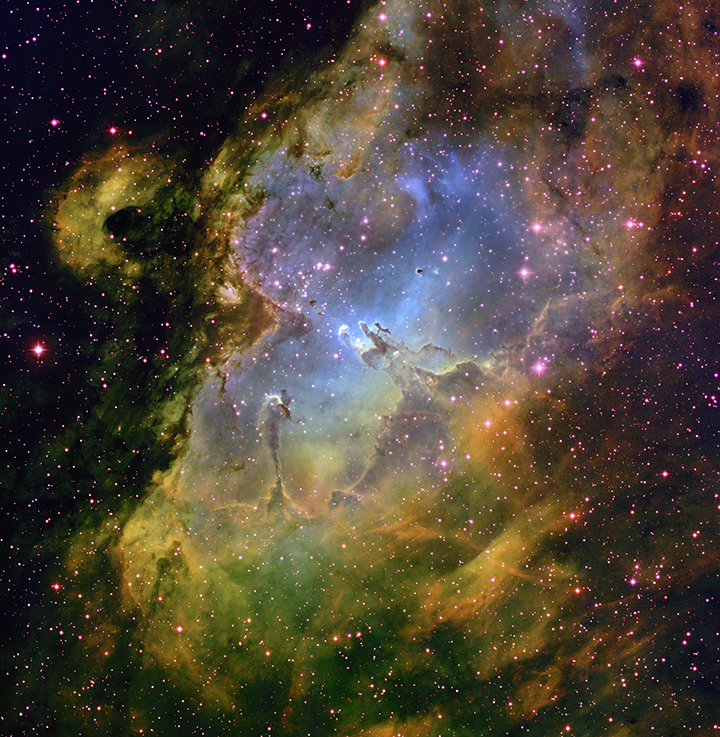Eagle Nebula
7,000 light years

Image Credit: T.A, Rector/University of Alaska Anchorage and B.A. Wolpa (NOAO/AURA/NSF)
Our Galaxy is filled with giant gas clouds containing atoms of hydrogen, carbon, oxygen, and other heavy elements–the building blocks out of which new stars and planets are made. These atoms can be energized–either from ultraviolet light from nearby stars or by collisions with other particles–and the extra energy may be released as light of very specific wavelengths. Astronomers look for the emission of particular elements in distant objects by using special filters on their telescopes. This image, made at the Kitt Peak National Observatory in Arizona, features the Eagle Nebula, or Messier 16, in all of its glory. This view shows a central cluster of stars that is forming within a larger hollow shell of gas and dust. The colors represent light given off by glowing hydrogen (green), oxygen (red), and sulfur (blue).
Download high-res image file | Download caption as .zip file
Nebulosa del çguila
7000 a–os luz
Nuestra Galaxia est‡ llena de nubes de gas grandes que contienen ‡tomos de hidr—geno, carbono, ox’geno y otros elementos pesados - que son los pilares fundamentales de los cuales se forman nuevas estrellas y planetas. Estos ‡tomos pueden adquirir energ’a - ya sea de la luz ultravioleta de estrellas cercanas o mediante colisiones con otras part’culas - y la energ’a extra se puede liberar como luz a unas longitudes de onda muy espec’ficas. Los astr—nomos buscan la emisi—n de elementos particulares en objetos distantes utilizando filtros especiales en sus telescopios. Esta imagen, realizada en el Observatorio Kitt Peak en Arizona, muestra la Nebulosa del çguila o el objeto Messier 16, en todo su esplendor. Esta vista muestra un cœmulo central de estrellas que se est‡ formando dentro de un cascar—n de gas y polvo m‡s grande. Los colores representan la luz brillante del hidr—geno (verde), ox’geno (rojo) y el azufre (azul).
Download high-res image file | Download caption as .zip file



